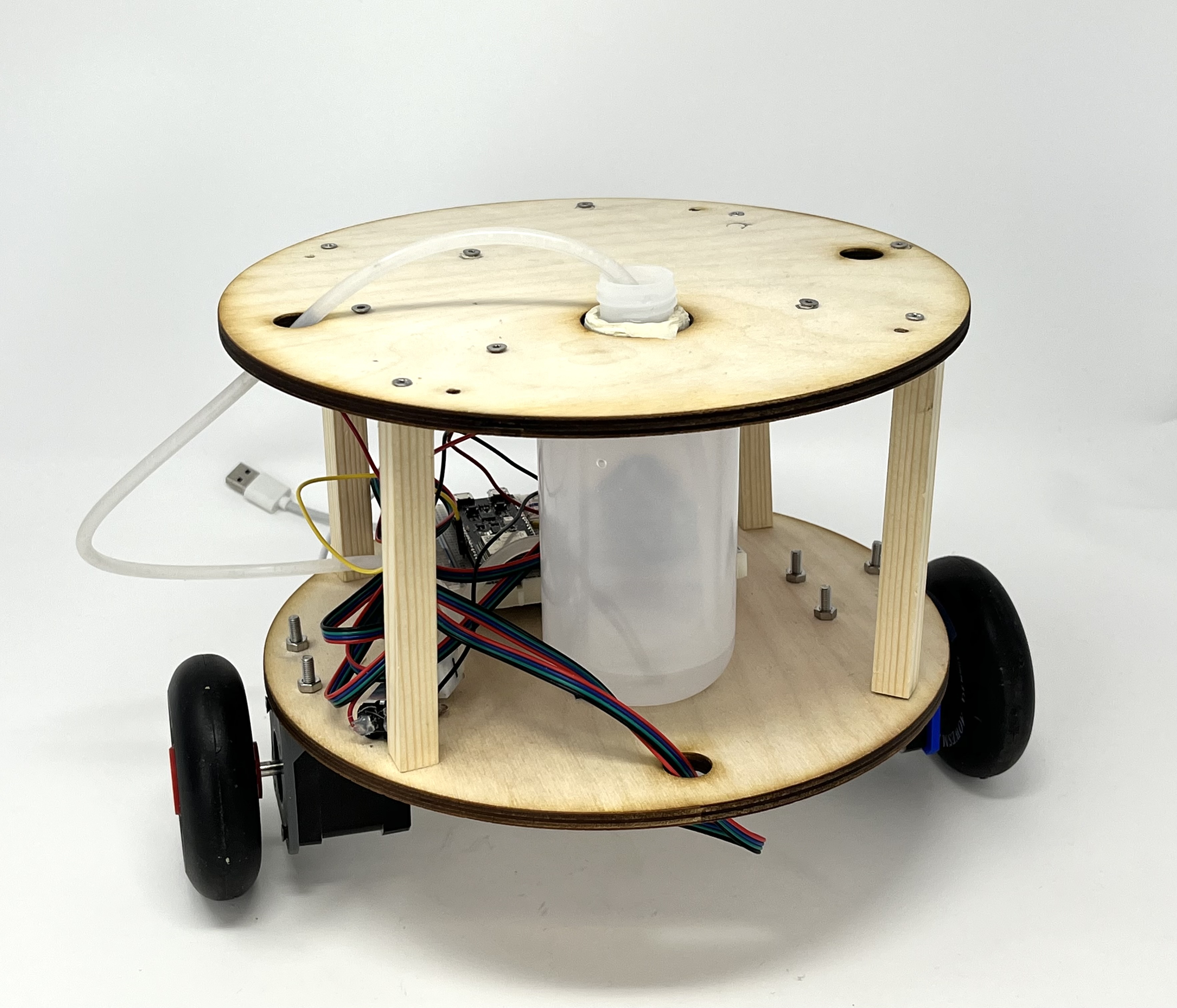Week 10
Make Me a MACHINE: Machine Building
The assignment:
Work with your lab group to build a "sidewalk plotter"; a 2+ DoF drawing machine. Your team is encouraged to heavily modify the example hardware and software. At a minimum, you should implement a new end-effector.
Drawing machines will be evaluated with respect to:
- Ability to calibrate motor position (i.e. guarantee the "home" position is the same each time you power on the device)
- Novelty of end-effector / drawing technique
- Precision: ability to draw a 1m-diameter circle and mark its center point
- Complexity of drawing output
As part of the Thursday group, my role in this project was creating and implementing the end effector. Read more about the entire project and everyone's parts here! Or on Geoff's week 10 webpage, as Geoff compiled the previous document onto a nice webpage. (Thanks Geoff!)
End Effector
Materials:
And then we considered how much safer it would be to create those drawings with water!
Thus, our end effector was a mini pump that drew from a water container on the chassis. We used this relay module tutorial from Random Nerd Tutorials to control the flow of the pump using a 5V 2-channel relay module (though you only need one of these channels). The code itself is simple, sending LOW to the relay pin to get the current flowing, and HIGH to stop the current. A few tests proved the flow and stop to be rather immediate. Below is the relay code, which got integrated into the full code later on.
Here's a test-run with temporary wiring:

And here's how the final drawing machine -- whom the cool kids call Hydro Homie -- turned out!:


- 1 5V 2-Channel Relay Module with Optocoupler
- 1 mini air pump + tubing
- 1 container for water (or other liquids!)
And then we considered how much safer it would be to create those drawings with water!
Thus, our end effector was a mini pump that drew from a water container on the chassis. We used this relay module tutorial from Random Nerd Tutorials to control the flow of the pump using a 5V 2-channel relay module (though you only need one of these channels). The code itself is simple, sending LOW to the relay pin to get the current flowing, and HIGH to stop the current. A few tests proved the flow and stop to be rather immediate. Below is the relay code, which got integrated into the full code later on.
/*********
Rui Santos
Complete project details at https://RandomNerdTutorials.com/esp32-relay-module-ac-web-server/
The above copyright notice and this permission notice shall be included in all
copies or substantial portions of the Software.
*********/
//changed from 26
const int relay = 40;
void setup() {
Serial.begin(115200);
pinMode(relay, OUTPUT);
}
void loop() {
// Normally Open configuration, send LOW signal to let current flow
// (if you're usong Normally Closed configuration send HIGH signal)
digitalWrite(relay, LOW);
Serial.println("Current Flowing");
delay(5000);
// Normally Open configuration, send HIGH signal stop current flow
// (if you're usong Normally Closed configuration send LOW signal)
digitalWrite(relay, HIGH);
Serial.println("Current not Flowing");
delay(1000);
}
Here's a test-run with temporary wiring:

And here's how the final drawing machine -- whom the cool kids call Hydro Homie -- turned out!:


